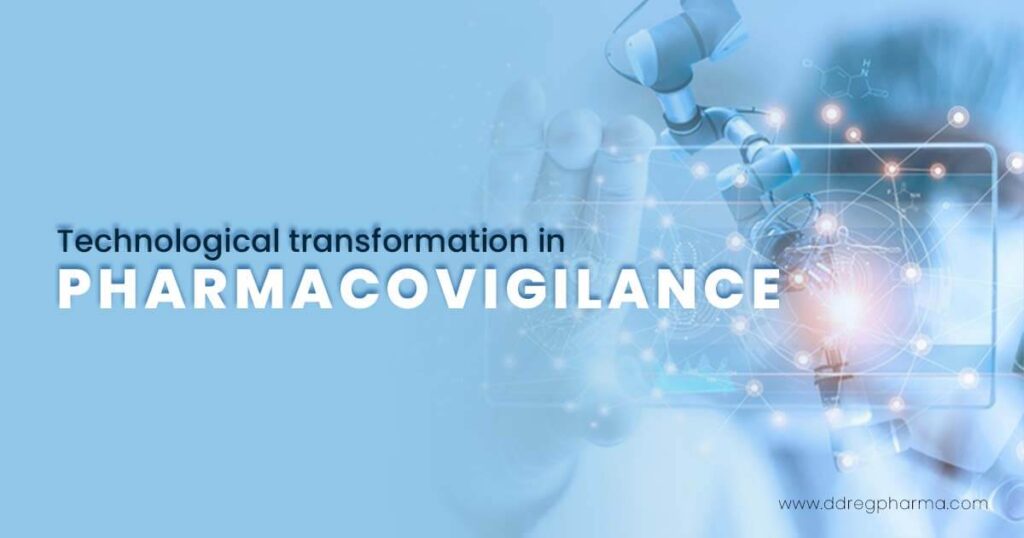Technological disruption is rapidly occurring across all industries. In the pharmaceutical industry, technological contenders are gradually transforming the landscape of drug development, clinical trials, and pre-clinical phases. Indeed, this holds true for Transformation Pharmacovigilance and drug safety monitoring.
Though the area of the industry is niche and highly regulated, hence the apprehension in incorporating technology in this field, there are key activities occurring that are changing the horizon of pharmacovigilance and drug safety.
Importance of Transformation in Pharmacovigilance databases
Safety databases are important as they ensure that all stored safety data is of high quality and according to regulatory standards, as all databases are required to be compliant to guidelines that have been set by the relevant bodies including ICH formats and incorporated with MedDRA terminology.
Hence, databases enable rapid assessment of safety data and deliver efficient case reporting to relevant regulatory authorities. Identifying and evaluating safety signals is a key activity in pharmacovigilance.
Development of Pharmacovigilance Training Modules for US-based Educational Institute
Over the years, the availability of databases has influenced the assessment of drug safety and frequency of reporting. As technology advances, collecting safety information has become easier; relevant data can easily be extracted and evaluated for predictive purposes.
Unified and globally renowned databases, such as the World Health Organization (WHO) VigiBase, have helped to streamline safety signal processing.
Information from other major databases in regions such as the USA, China, and the EU, is collected and stored in VigiBase.
Another example is EudraVigilance that is the official pharmacovigilance database for European countries. On a national level, databases such as the FDA adverse event reporting system (FAERS) of the USA, the French pharmacovigilance database (FPDB) of France are some of the established pharmacovigilance databases that have been functioning for decades [1].
Challenges and progression in Transformation Pharmacovigilance technology
There are significant technologies that have changed the forefront of pharmacovigilance for better compliance and drug safety management.
However, there are still some challenges that need to be overcome to ensure smooth operation and surveillance of pharmacovigilance systems.
In clinical practice, inconsistent adverse event reporting occurs which is a concern especially since the volume and complexity of adverse events are increasing that could hinder the drug’s safety profile and lead to false positives and negatives because of incomplete and inconsistent data.
Furthermore, as regulations change and become more complex worldwide, the need for new and advanced pharmacovigilance capabilities will increase and pose challenges in countries of emerging markets that lack a robust regulatory environment.
Hence, advanced analytics and such technological solutions could help tackle these challenges and implement more efficient pharmacovigilance systems and practices.
Currently, the main tech influencers in this field are Big Data, Natural Language Processing (NLP), and Cloud. Big Data encompasses the large amounts of computerized medical data that are easily accessible for all healthcare and regulatory authorities.
Computerization of the data allows for better management and advanced analytics that can be used to identify relevant and important trends.
Artificial intelligence is driving all industries worldwide. Organizations progress further as they incorporate artificial intelligence in their ways of working. NLP, a branch of artificial intelligence, facilitates the comprehension of human language by computers.
It allows better detection of events, outcomes, and even risk factors from a range of sources and filters the large volume of noise in order to stay updated with post-marketing safety signals.
However, NLP tools that permit effective filtering of safety signals is limited and requires further development. Finally, Cloud technology allows large volume of medical information to be stored and is easily accessible.
More organizations are incorporating cloud technology for feasibility, scalability, and cost efficiency purposes, that will ultimately assist in making informed decision about drugs and their safety profile [2].
Organizations are focusing on establishing advanced pharmacovigilance systems, integrated with key components, to improve patient safety while reducing costs.
Being able to leverage real-time safety data using machine learning techniques to identify and evaluate safety information can lead to improved patient outputs. Systems that are user-friendly, designed to maintain large volumes of data, and allow for aggregate reporting that can be scaled up will be beneficial in enhancing periodic safety data.
Additionally, automating safety data collection and processing and lead to improved adverse event reporting.
Cloud-based solutions
The internet is undoubtedly an advantageous tool, and more organizations are optimizing internet-based computing services.
Cloud-based solutions are slowly being incorporated into various areas of all industries- including pharmacovigilance for various reasons.
Firstly, upgrading systems becomes an easy process which is ideal as regulations become more stringent and more technological advancements in adverse event analysis is being incorporated.
Being able to upgrade the system on-premises reduces the cost burden that many pharmaceutical organizations face. Secondly, data migration and integration become a smooth process as traditionally Transformation Pharmacovigilance systems required data to be exchanged manually.
This meant that important data was often missed, or there were issues in accessing critical data, during manual data migration.
The pharmaceutical industry faces new technological transformations that come with their own pros and cons. Being open and implementing these advances can change the face of pharmacovigilance and drug safety to bring efficiency, high-quality, and transparency.
In the era of digitization, adopting technological disruptors will only drive the industry forward.
-Akshita Srivastava, Senior Medical Writer at DDReg Pharma

